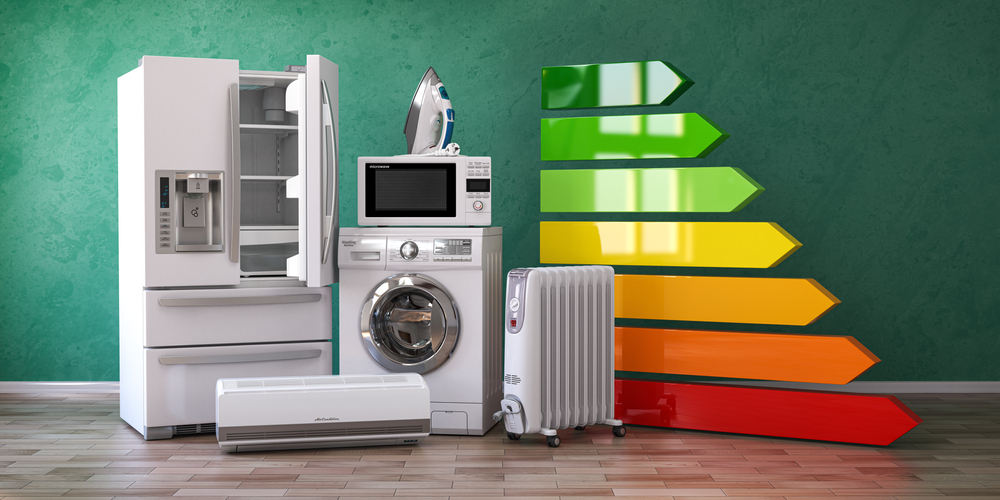Electricity is one of, if not the biggest, expense for many Filipino households. No thanks to certain house appliances, your household’s monthly electric bills can dent your budget. For instance, air conditioning, which consumes the greatest electricity at home at 46%, can undermine your efforts to reduce utility costs. Luckily, knowing how much power home appliances use can help drive down your electricity bills.
So, let’s explore electricity usage by appliance to find out what appliances use the most electricity in the Philippines. We’ll also discuss how to compute power consumption, plus a few practical tips to reduce usage and save money.
How to Compute for Appliances’ Electric Consumption
The figures on staple appliances’ average power consumption may change depending on numerous factors, like your utility provider’s charges per kilowatt-hour (kWh). As such, knowing how to compute an appliance’s monthly energy use on your own is vital.
Here’s the formula for this computation:
(appliance wattage × number of daily operating hours × 30 days in a month) ÷ 1,000= monthly kWh
- Get the appliance’s power consumption in watts (W). You can often find this information on a sticker or imprinted on its body.
- Identify its operating hours per day. Multiply this figure by the device’s wattage.
- Multiply the result by 30, the average number of days a month.
- Divide it by 1,000 to get the kWh value. The final figure is how much power the appliance consumes within a month.
Let’s say you’re trying to determine the monthly power consumption of an 800-watt microwave oven operating for three minutes (0.05 hours) daily. Here’s the formula filled in with these details:
(80 × 0.05 × 30) ÷ 1000 = monthly kWh
120 ÷ 1,000= monthly kWh
0.12 = monthly kWh
6 Appliances That Use the Most Electricity in the Philippines
Below, you’ll find a list of the typical wattage of appliances in the Philippines, calculated using Meralco’s Appliance Energy Calculator. Then, assuming the average Filipino household’s monthly power expense is around ₱2,000, you can estimate how much it costs to use certain devices at home.
-
Television
TVs have come a long way from being power-intensive machines to one of the most efficient staples in Filipino households. The typical 32-inch LED TV consumes 50 watts (W), costing ₱83.70 per month if it operates five hours daily. To save on energy consumption and costs, consider reducing your watch time.
-
Electric fan
Electric fans are an effective way to cool a space without significantly adding to your electricity bill. A 14-inch electric fan wattage in the Philippines running 24/7 sits at around 60 W, which translates to ₱482.11 monthly. You might find it challenging to limit its use because of the country’s notorious heat, but turning it off during cold nights can help significantly.
-
Desktop computer
Desktop computers consume around 23 W, setting you back ₱77 every month after 10 hours of daily use. These figures can go even higher with more computers at home and external devices connected to them, so try to limit their use to essential work so you can save electricity.
-
Refrigerator
Fridges are among the most power-hungry appliances. A two-door, 8-cubic-foot ref wattage in the Philippines is roughly 160 W—an ₱899.94 monthly addition to your bill at round-the-clock operation. Fortunately, you can lessen your electricity bill by opting for inverter refrigerators, which are more energy-efficient than non-inverters.
-
Washing machine
Washing machines are notorious for devouring electricity. A fully automatic front-load unit with an 8-kilogram capacity consumes 2,600 W; operating it twice a week for two hours per laundry time adds ₱498 to your bill. Thankfully, inverter washing machines can help you save more power and reduce costs in the long run.
-
Air conditioner
A one-horsepower, non-inverter, split-type aircon wattage in the Philippines is a staggering 1,800 W of power, costing ₱1,071 when operating five hours daily for a month. While you may opt for energy-efficient inverter ACs, doing away with air conditioning and ventilating your home with fans is usually the most cost-effective alternative.
7 Tips to Make Home Appliances More Energy-Efficient
When you know how much power your appliances use, you can start reducing your electricity costs and save money with the help of these strategies.
-
Unplug your television from the outlet, not just switch it off
Plugged TVs typically wait in a “standby mode,” consuming electricity even when it’s off. So, disconnect your television from power sources when not operating to avoid wasting electricity and money.
-
Conduct regular electric fan maintenance
Dust and other debris weaken your electric fan’s performance by drying up the motor and impeding airflow. Regularly cleaning the assembly and oiling the engine prevent accumulation and maintain efficiency.
-
Disconnect external devices from your PC
Docks, removable hard drives, speakers, and other external devices draw power from your computer when standing by, so disconnect them when not in use.
-
Buy an energy-efficient refrigerator that can maintain optimum temperature
Some refrigerators use inverter technology to adjust their efficiency and maintain optimum temperatures automatically. Switching to an inverter unit from a non-inverter one may be worth the cost in the long run.
-
Wash clothes in big batches and at lower temperatures when using your laundry washer
A non-inverter washing machine uses a default amount of power regardless of how much you’re laundering. So, maximize its consumption by washing clothes in big batches and turning down your heat settings.
-
Avoid overusing your air conditioner at low temperatures
Operating your AC at low temperatures for prolonged periods may lead to coil freeze, which keeps the AC from running efficiently. To avoid it, set your temperature at a comfortable level and only use the unit for a few hours.
-
Use a SMART strip
SMART power strips prevent energy waste by automatically turning off standby appliances. With a SMART strip, turning off the TV also shuts down the DVD player.
Reduce Your Power Consumption with Solar Energy
Home appliances are critical to daily living, so eliminating them from your household isn’t realistically viable. However, knowing how much power your machines consume can help you pick more energy-efficient models. Also, implementing the strategies above can reduce your power use and allow you to enjoy a more functional home without worrying much about cost.
If you’re considering solar power as another option to save money, look no further than SolarNRG as your provider. We’re a leading supplier of solar panels for homes and businesses, enabling countless Filipinos to enjoy the benefits of low electric bills.
Inquire about our services today!


Recent Comments